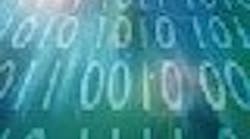1. Built upon the approved IEC 61804-2 International Standard
2. Independent of operating system and communication protocol
3. A Single EDD for all EDD applications (PCs/Handhelds/etc.)
4. Built to require no changes to existing EDDs
The new functions added to the language include:
Enhanced user interface — Information can now be displayed in different formats so that related information can be organized together in Windows, dialogs, and group boxes.
Images — static images can be included with the device for display when called. This will be useful to help illustrate definitions of terms or instructions for calibration and maintenance procedures.
Graphing system — The ability to display arrays of data as a value versus time will make it possible to capture and display information required for calibration and maintenance including for example the wave form for an electromagnetic device such as radar and ultrasonic level devices or the hysterisis curve of a valve. The figure shows how a radar curve may be presented. Multiple plots or data sets can be included on the same graph including emphasis of key points such as the filter in this example.
In addition, it will be possible to directly edit the data used to generate the graph and interactively zoom in and out on key areas of interest for additional analysis.
Persistent Data Storage — a limited amount of data now can be archived for future reference/comparison to support the diagnosis and analysis of how a device changes over time. This will enable maintenance staff to capture and visualize a number of items such as drifting of a signal or change in valve characteristics over time. The capability to store/access device data on the host, independent of host file system, is possible.
Simple Math — linear equations of the y=mx+b form are the final feature visible to the end user. Information in the form of an equation is much less memory intensive than an array of data points, especially for graphics. This is easily demonstrated in the Windows environment by comparing two versions of the same image such as a JPEG or BMP file versus the WMF file.
In fact, the new features of EDDL make this update similar to the upgrade experienced with the transition from "text-based" DOS to Windows 3.1. Similarly, like Windows 3.1, this is only the beginning of the graphical environment for EDDL — work has already started on the next series of enhancements to migrate to the OPC-Unified Architecture (OPC-UA) platform. Also like Windows, the expected delivery date for this "Part 2" release — due to its complexity — is approximately three years away. The use of OPC-UA will enable better integration of field devices with host systems and asset management/computer based maintenance systems.
In the interim, and despite this enhancement, the biggest challenge for fieldbus systems is a uniform user interface and interpretation of the available data by host and other systems. A consortium of predominantly European companies has developed a technology to help with this issue. FTD/DTM is designed so the device manufacturer fully defines the interface to access all the information available in today's smart devices. Like the EDDL effort, the FDT/DTM group also is migrating to an OPC-UA environment. The organization also is about to release a new style guide to improve the consistency of data presentation across participating manufacturers, as well as an FDT "book" in English and German.
Future columns will discuss both FDT/DTM and OPC-UA technology in more detail. Until then, best wishes for a successful start to 2005.
About the Author




